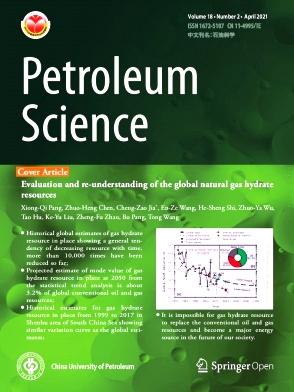A technical review of CO2 flooding sweep-characteristics research advance and sweep-extend technology
IF 6
1区 工程技术
Q2 ENERGY & FUELS
引用次数: 0
Abstract
The utilization and storage of CO2 emissions from oil production and consumption in the upstream oil industry will contribute to sustainable development. CO2 flooding is the key technology for the upstream oil industry to transition to sustainable development. However, there is a significant challenge in achieving high recovery and storage efficiency in unconventional reservoirs, particularly in underdeveloped countries. Numerous studies have indicated that the limited sweep range caused by premature gas channeling of CO2 is a crucial bottleneck that hinders the enhancement of recovery, storage efficiency and safety. This review provides a comprehensive summary of the research and technical advancements regarding the front sweep characteristics of CO2 during migration. It particularly focuses on the characteristics, applicable stages, and research progress of different technologies used for regulating CO2 flooding sweep. Finally, based on the current application status and development trends, the review offers insights into the future research direction for these technologies. It is concluded that the front migration characteristics of CO2 play a crucial role in determining the macroscopic sweep range. The focus of future research lies in achieving cross-scale correlation and information coupling of CO2 migration processes. Currently, the influence weight of permeability, injection speed, pressure and other parameters on the characteristics of ‘fingering-gas channeling’ is still not well clear. There is an urgent need to establish prediction model and early warning mechanism that considers multi-parameters and cross-scale gas channeling degrees, in order to create effective strategies for prevention and control. There are currently three technologies available for sweep regulation: flow field intervention, mobility reduction, and gas channeling plugging. To expand the sweep effectively, it is important to systematically integrate these technologies based on their regulation characteristics and applicable stages. This can be achieved by constructing an intelligent synergistic hierarchical segmented regulation technology known as ‘flow field intervention + mobility regulation + channel plugging chemically’. This work is expected to provide valuable insights for achieving conformance control of CO2-EOR and safe storage of CO2.
CO2驱油波及特性研究进展及波及扩展技术技术综述
上游石油工业对石油生产和消费排放的二氧化碳的利用和储存将有助于可持续发展。二氧化碳驱油是上游石油工业实现可持续发展的关键技术。然而,在非常规油藏中实现高采收率和储存效率存在重大挑战,特别是在不发达国家。大量研究表明,CO2过早气窜导致的波及范围有限是阻碍采收率、储气效率和安全性提高的关键瓶颈。本文综述了CO2在运移过程中前移特性的研究和技术进展。重点介绍了各种CO2驱油波及调节技术的特点、适用阶段和研究进展。最后,根据目前的应用现状和发展趋势,对这些技术的未来研究方向进行了展望。研究表明,CO2的锋面运移特征对确定宏观波及范围起着至关重要的作用。未来研究的重点是实现CO2迁移过程的跨尺度相关和信息耦合。目前,渗透率、注入速度、压力等参数对“指气窜”特性的影响权重还不是很清楚。建立考虑多参数、跨尺度气窜程度的预测模型和预警机制,制定有效的防治策略是当务之急。目前有三种可用于波及调节的技术:流场干预、降低流度和封堵气窜。为了有效地扩大波及范围,必须根据这些技术的调节特点和适用阶段,对其进行系统集成。这可以通过构建一种被称为“流场干预+流动性调节+化学堵塞通道”的智能协同分层分段调节技术来实现。这项工作有望为实现CO2- eor的一致性控制和CO2的安全储存提供有价值的见解。
本文章由计算机程序翻译,如有差异,请以英文原文为准。
求助全文
约1分钟内获得全文
求助全文
来源期刊

Petroleum Science
地学-地球化学与地球物理
CiteScore
7.70
自引率
16.10%
发文量
311
审稿时长
63 days
期刊介绍:
Petroleum Science is the only English journal in China on petroleum science and technology that is intended for professionals engaged in petroleum science research and technical applications all over the world, as well as the managerial personnel of oil companies. It covers petroleum geology, petroleum geophysics, petroleum engineering, petrochemistry & chemical engineering, petroleum mechanics, and economic management. It aims to introduce the latest results in oil industry research in China, promote cooperation in petroleum science research between China and the rest of the world, and build a bridge for scientific communication between China and the world.
 求助内容:
求助内容: 应助结果提醒方式:
应助结果提醒方式:


